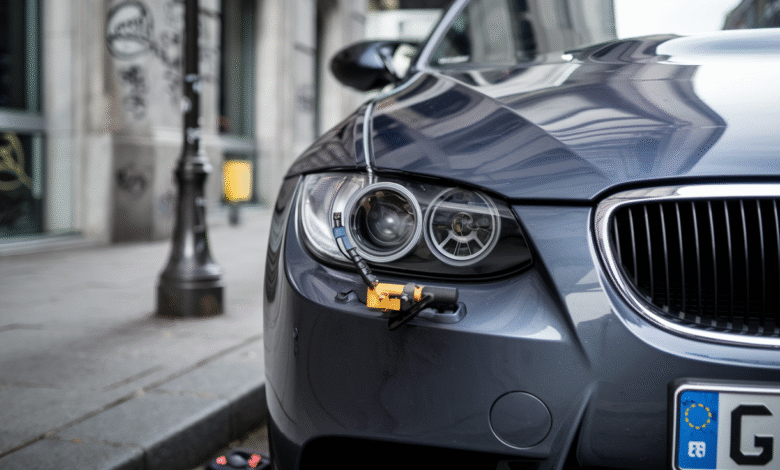How to Fix BMW E90 M3 EDC Damper Connector Corrosion and Prevent Damage

bmw e90 m3 edc damper connector corrosion is a common issue for many M3 owners. Over time, the connector that links the Electronic Damper Control (EDC) system can develop rust or corrosion. This happens because moisture, dirt, and road salt can get inside the connector, slowly eating away at the metal contacts. When this occurs, the EDC system may start to act up, causing warning lights on the dashboard, uneven ride quality, or even failure in controlling the dampers properly. Knowing the signs early can save you from expensive repairs and keep your car performing at its best. Regular inspection and proper cleaning can make a big difference in preventing this type of damage.
If you notice issues like the dampers feeling stiff, warning lights on your dashboard, or strange noises from the suspension, it could be a result of bmw e90 m3 edc damper connector corrosion. Fixing this problem is not just about cleaning the connector; it involves checking the wiring for damage, using proper contact cleaner, and sometimes replacing parts if corrosion is severe. Many owners have successfully resolved this by removing the connector, cleaning it thoroughly, and applying protective coatings to prevent future rust. Understanding the problem and acting quickly helps maintain your car’s safety and ride quality. Preventive maintenance is key, and even small actions like keeping your car dry and inspecting connectors regularly can extend the life of your EDC system.
What Causes BMW E90 M3 EDC Damper Connector Corrosion?
bmw e90 m3 edc damper connector corrosion happens mostly because water, dirt, and salt can reach the metal pins inside the connector. When metal touches water and air over time, it starts to rust. The car’s EDC system is very sensitive, so even small corrosion can affect how the dampers work. Sometimes the rubber seals around the connector get old and cracked, letting moisture in. Road conditions, like rain or snow, make this problem worse. Drivers who do not check their car often may not notice the early signs of corrosion. Dirt and dust can also make it harder for electricity to pass through the connector. This can lead to warning lights, uneven suspension, or noisy shocks. Regular care and cleaning help stop corrosion before it becomes serious.
Signs Your BMW E90 M3 EDC Damper Connector is Corroded
You can tell bmw e90 m3 edc damper connector corrosion is happening when the car behaves differently. The dampers may feel stiff or soft in the wrong places, making the ride uncomfortable. Warning lights may appear on the dashboard, especially related to the suspension or EDC system. Sometimes you might hear strange noises from the shocks or suspension area. If the car feels uneven or leans more on one side, it can be a sign that the connector is not working properly. Corrosion can also make the car misread the damping settings. Checking the connector and wires carefully can save you from bigger repairs. Cleaning or replacing corroded parts quickly helps the suspension stay smooth and safe. Regular inspection prevents future problems and keeps your M3 driving great.
Step-by-Step Guide to Cleaning BMW E90 M3 EDC Damper Connector Corrosion
Cleaning bmw e90 m3 edc damper connector corrosion is easier if you follow the right steps. First, remove the connector carefully and check for any broken wires or pins. Use a contact cleaner to remove rust and dirt from the pins. Avoid using water directly because it can make corrosion worse. If corrosion is strong, a small brush or sandpaper can gently clean the metal. After cleaning, apply a protective coating or dielectric grease to stop future rust. Reconnect the connector securely and check the EDC system for errors. Doing this regularly keeps the dampers working correctly and prevents electrical problems. Being careful and patient while cleaning is important to avoid damaging the connector.
Preventing BMW E90 M3 EDC Damper Connector Corrosion in the Future
Preventing bmw e90 m3 edc damper connector corrosion is easier than fixing it. Keep the connector dry and clean during regular maintenance. Check the rubber seals for cracks and replace them if needed. Avoid driving through deep water or snow that can splash on the connectors. Using a protective grease or anti-corrosion spray can make a big difference. Inspect the connector every few months to catch early signs of rust. Regularly washing the car and keeping it away from road salt helps too. Preventive care ensures the EDC system works smoothly and the dampers last longer. Small actions now save big money and problems later.
When to Replace Your BMW E90 M3 EDC Damper Connector
You should replace bmw e90 m3 edc damper connector corrosion when cleaning does not fix the problem. If the pins are too damaged or rusted, the connector will not work properly. Warning lights on the dashboard that do not go away indicate replacement may be needed. Broken wires or loose connections are also signs it is time to change the connector. Using a damaged connector can cause uneven suspension or damage other EDC parts. Replacement ensures smooth driving and keeps the car safe. Doing it early saves more expensive repairs later. Always use the correct OEM or high-quality connector for best results.
Common Mistakes to Avoid During EDC Damper Connector Maintenance
Many people make mistakes while dealing with bmw e90 m3 edc damper connector corrosion. One mistake is using water or harsh chemicals that worsen the rust. Another is reconnecting the connector without checking the pins or wires first. Some drivers forget to apply protective grease after cleaning, which lets corrosion return quickly. Ignoring cracks in the rubber seals can also lead to moisture getting inside again. Rushing the process can damage pins or break the connector completely. Following the right steps carefully and inspecting parts regularly prevents these mistakes. Proper maintenance keeps the EDC system working and prolongs the life of your car’s suspension.
Why Ignoring BMW E90 M3 EDC Damper Connector Corrosion Can Be Costly
Ignoring bmw e90 m3 edc damper connector corrosion can lead to expensive problems. The EDC system may fail to control the dampers, causing uneven or unsafe driving. Other suspension parts can get damaged because of incorrect damping. Warning lights may not turn off and can hide other issues. If corrosion spreads, it can affect wiring and electronics around the connector. Repairing or replacing damaged EDC parts is much more expensive than cleaning the connector early. Regular checks and maintenance are cheaper and keep your car safe, smooth, and reliable. Taking action early avoids bigger headaches later.
Conclusion
bmw e90 m3 edc damper connector corrosion is a small problem that can become big if ignored. Cleaning and checking the connector often keeps your dampers working well. Small steps like keeping it dry and using protective grease help a lot.
Regular inspection saves money and prevents dangerous suspension issues. Acting early keeps your M3 safe and comfortable to drive. Maintaining connectors is easy and smart for any car owner.
FAQs
Q: What is BMW E90 M3 EDC damper connector corrosion?
A: It is rust or damage in the connector that links the EDC system to the dampers.
Q: How do I know if my connector is corroded?
A: Warning lights, stiff or uneven dampers, and strange noises are common signs.
Q: Can I clean it myself?
A: Yes, with a contact cleaner, small brush, and protective grease you can clean minor corrosion.
Q: How often should I check the connector?
A: Inspect it every few months or after driving in wet or salty conditions.
Q: When should I replace the connector?
A: Replace it if pins are damaged, cleaning does not fix corrosion, or warning lights persist.



